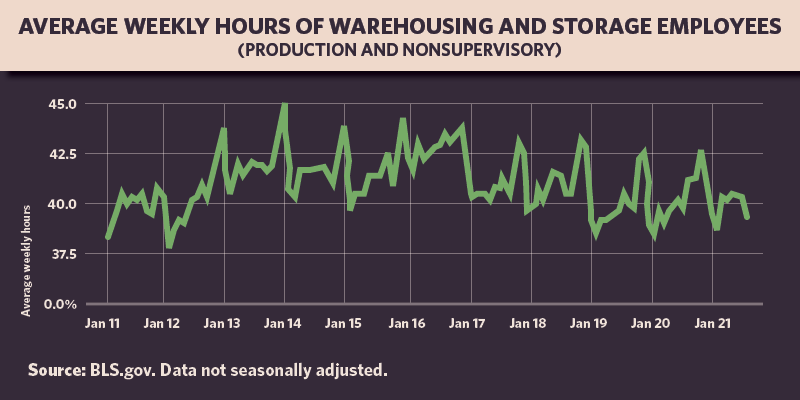
Tis the season for family and friends to gather, travel and exchange gifts. While joyful, this season can also be stressful financially for workers and their families and we all must stay vigilant about workers’ rights.
During the holidays and every day, employers should ensure that they are treating workers with dignity and respect. Unfortunately, the Wage and Hour Division finds these common violations during this time of year:
-
Failing to pay employees for all hours worked, including time spent taking inventory, completing paperwork beyond clocked hours, pre- or post-shift meetings, or waiting for shipment arrivals.
-
Giving paid time off time off for overtime hours worked instead of paying time and one half wages after 40 hours of work.
-
Considering certain workers to be contract labor or independent contractors instead of employees who should receive minimum wage and overtime protections.
-
Making illegal deductions from pay in overtime workweeks including breakages, accidents, tool replacement or equipment failure.
Protections for workers involved in warehousing and interstate commerce activities
This holiday season will likely show a rise in demand for warehouse workers. Employees working in warehouses may experience additional work hours due to increased holiday shipment demands. For many employees in this industry, their work involves receiving, shipping, transporting and loading goods. Workers also prepare and manage documents relating to such shipments.
All of these activities are considered “interstate commerce” under the Fair Labor Standards Act, which means the employee performing such work is entitled to minimum wage and overtime pay protections. Other warehouse facility workers, such as security guards, janitors and maintenance employees, perform work that is closely related and directly essential to such interstate, so they are also covered by the FLSA’s wage and hour protections.
In direct response to the known pay issues affecting warehousing and logistics workers, the Wage and Hour Division has developed a strategic initiative to ensure compliance with the Fair Labor Standards Act in this industry.

Data indicates warehouse worker hours’ peak during the holiday season. View the plain text chart of this graphic below.
All workers should know these rights
Other employees working during holiday hours are entitled to protections under the FLSA, too. Employers must pay covered, non-exempt employees overtime premiums for every extra hour if they work more than 40 hours in a workweek. This rule applies whether the worker is paid an hourly rate, salary, piece rate, commission, or any other compensation method.
To determine a worker’s overtime pay, each workweek stands alone. Regardless of when the holiday occurs, any hours worked over 40 hours in one workweek must be paid at time and a half of the regular hourly pay rate.
Special rules apply to young workers
The Wage and Hour Division protects children under its child labor rules that provide protections and restrictions for young employees. The law specifically prohibits anyone under the age of 16 from working in a warehouse. Wholesalers and retailers may have employees as young as 14 in certain jobs, but only during closely regulated hours and in very limited occupations. Employees under age 18 may not engage in occupations which have been declared hazardous, including operating equipment such as forklifts.
Have a question about your wages or hours?
If you or someone you know is experiencing pay problems, please visit our website or call 1-866-4US-WAGE (1-866-487-9243). We are here to help you and have resources in many languages.
Jessica Looman is the acting administrator of the Wage and Hour Division. Follow the division on Twitter at @WHD_DOL.
|
Year |
Jan |
Feb |
Mar |
Apr |
May |
Jun |
Jul |
Aug |
Sep |
Oct |
Nov |
Dec |
|
2011 |
38.4 |
39.3 |
40.6 |
39.9 |
39.9 |
40.4 |
40.3 |
40.6 |
39.8 |
39.7 |
41.0 |
40.7 |
|
2012 |
37.8 |
38.9 |
39.4 |
39.2 |
39.6 |
40.5 |
40.5 |
41.0 |
40.6 |
41.4 |
42.5 |
43.7 |
|
2013 |
40.5 |
41.1 |
42.1 |
41.6 |
41.9 |
42.1 |
41.9 |
41.9 |
41.7 |
41.9 |
43.2 |
45.3 |
|
2014 |
41.0 |
40.5 |
41.8 |
41.8 |
41.7 |
41.8 |
41.8 |
41.9 |
41.6 |
41.0 |
42.1 |
43.9 |
|
2015 |
39.8 |
39.7 |
40.8 |
40.6 |
41.6 |
41.5 |
41.4 |
41.5 |
42.7 |
40.8 |
42.4 |
44.4 |
|
2016 |
42.2 |
41.9 |
43.1 |
42.1 |
42.4 |
42.9 |
43.0 |
43.5 |
43.2 |
43.3 |
43.7 |
43.8 |
|
2017 |
40.7 |
40.4 |
40.7 |
40.7 |
40.5 |
41.0 |
40.9 |
41.4 |
40.6 |
41.1 |
43.1 |
42.5 |
|
2018 |
39.9 |
40.0 |
40.8 |
40.4 |
40.8 |
41.7 |
41.6 |
41.4 |
40.6 |
40.7 |
43.3 |
42.9 |
|
2019 |
39.3 |
38.7 |
39.3 |
39.2 |
39.2 |
39.5 |
39.9 |
40.6 |
39.9 |
40.0 |
42.3 |
42.6 |
|
2020 |
39.2 |
38.8 |
39.9 |
39.2 |
39.5 |
40.0 |
40.3 |
39.7 |
41.3 |
41.4 |
42.7 |
41.1 |

 U.S. Department of Labor Blog
U.S. Department of Labor Blog
